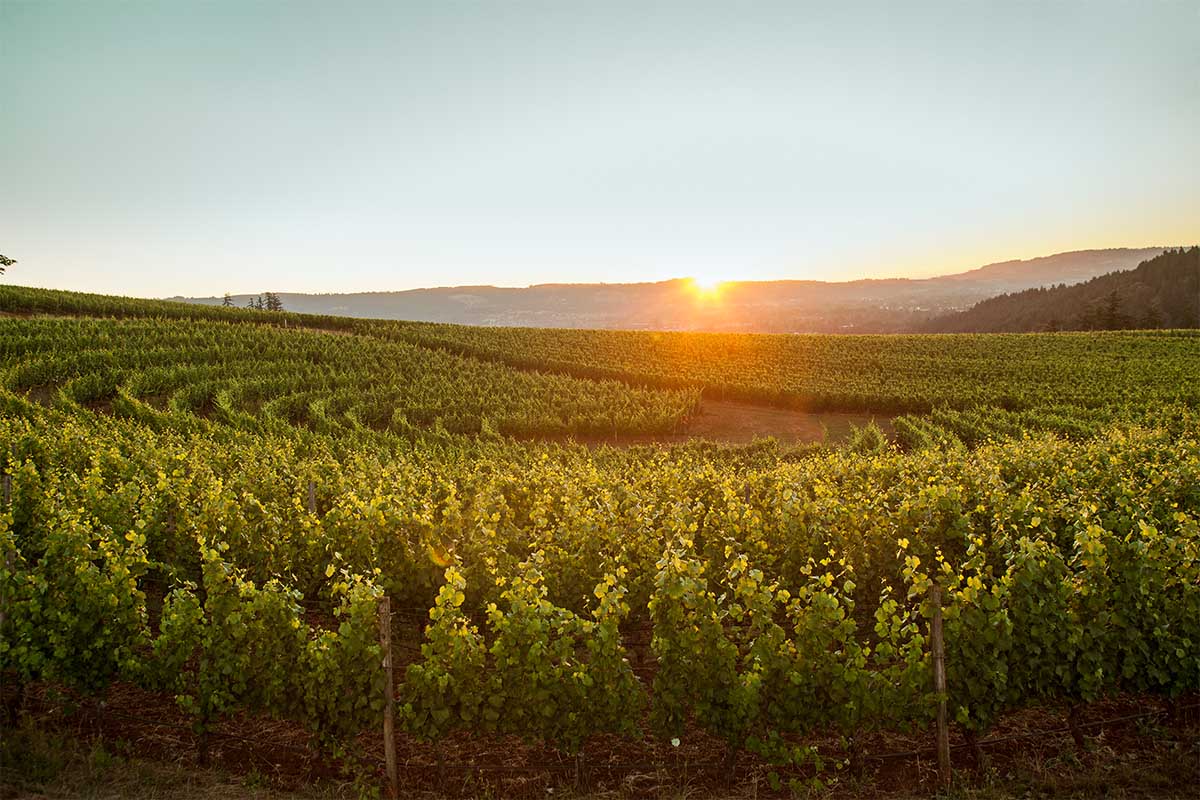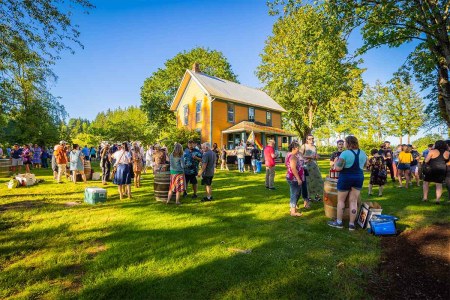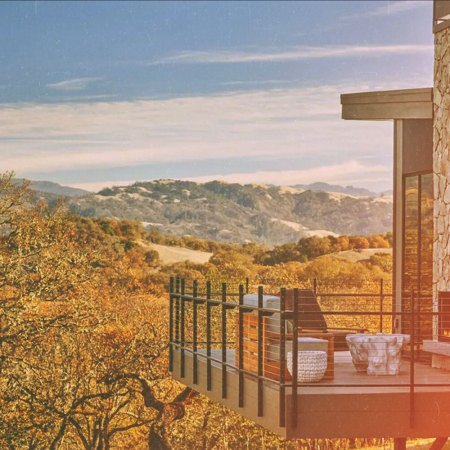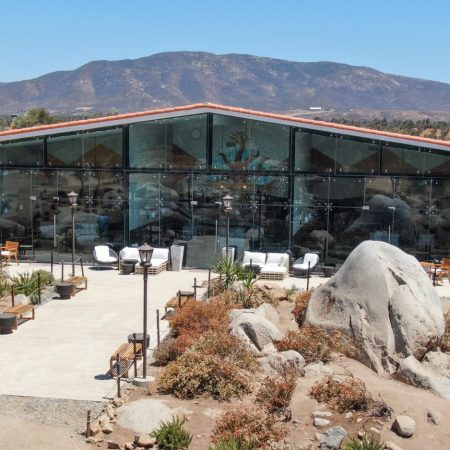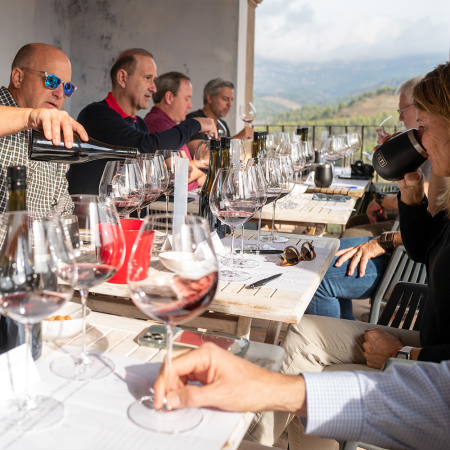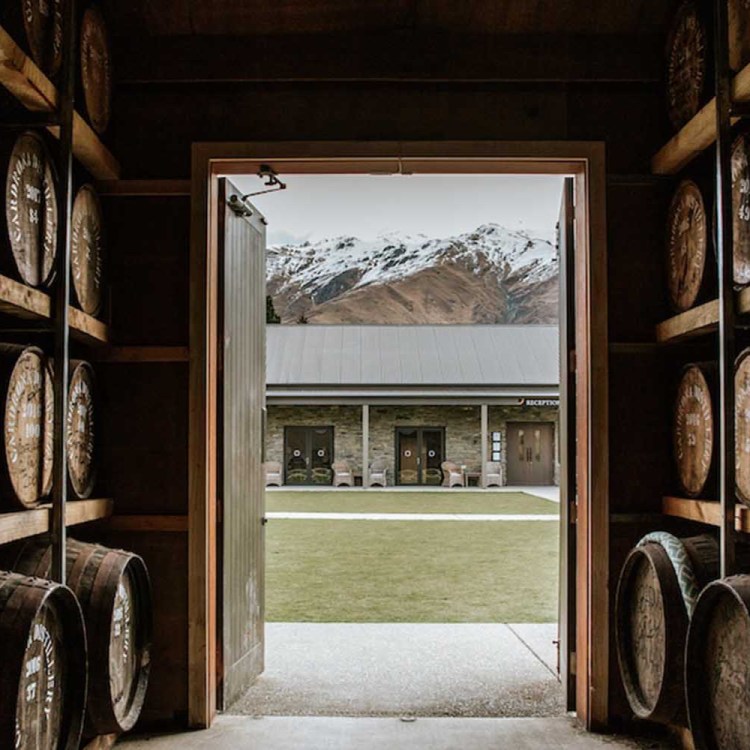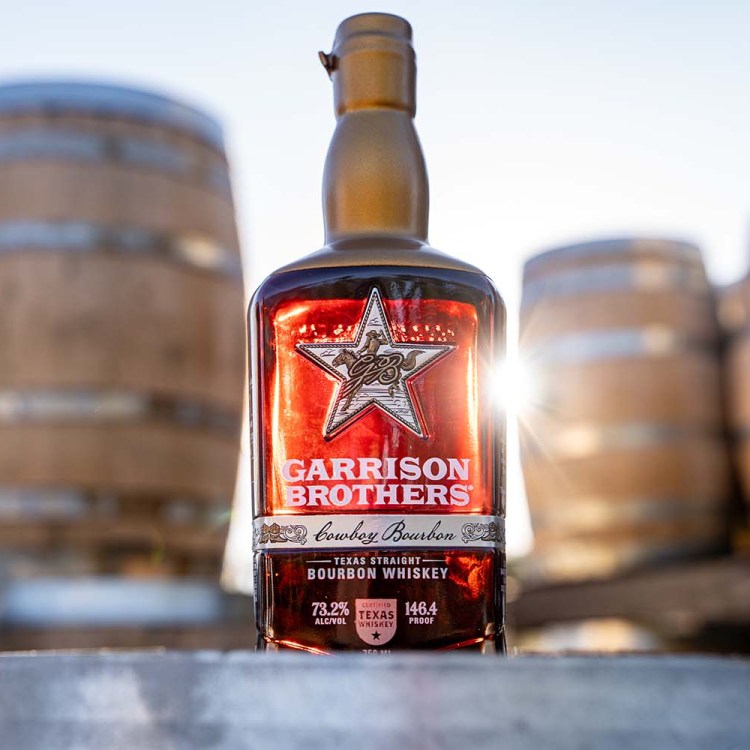My fiancée and I had finally made it in for a visit. We’d driven by a large marble-white column simply labeled “Sequitur” perhaps half a dozen times during the last couple of months as we ventured further south into Oregon’s Willamette Valley wine country. The font was a stark, design-forward departure compared to other wineries we’d recently been to, the kind of signage that makes you wonder what the heck is going on up that gravel road.
As the path wound a gentle grade to a nondescript parking lot, the architecture began to reveal itself: modern lines and open spaces, tasteful furniture that didn’t condescend the experience and, most importantly, fantastic wine. This is a snapshot of what’s happening in America’s most exciting American Viticultural Area (AVA). Although the Willamette Valley’s profile has grown considerably in the last decade, there is still a homey, rustic feel captured here that seems to have largely passed by more visited areas like Napa and the Central Coast. On any given Sunday, you’ll find yourself surrounded not by buses and droves of weekend wine warriors, but rather by the winemaker working on some property upgrades and the soft hum of bees buzzing about, pollinating the earth.
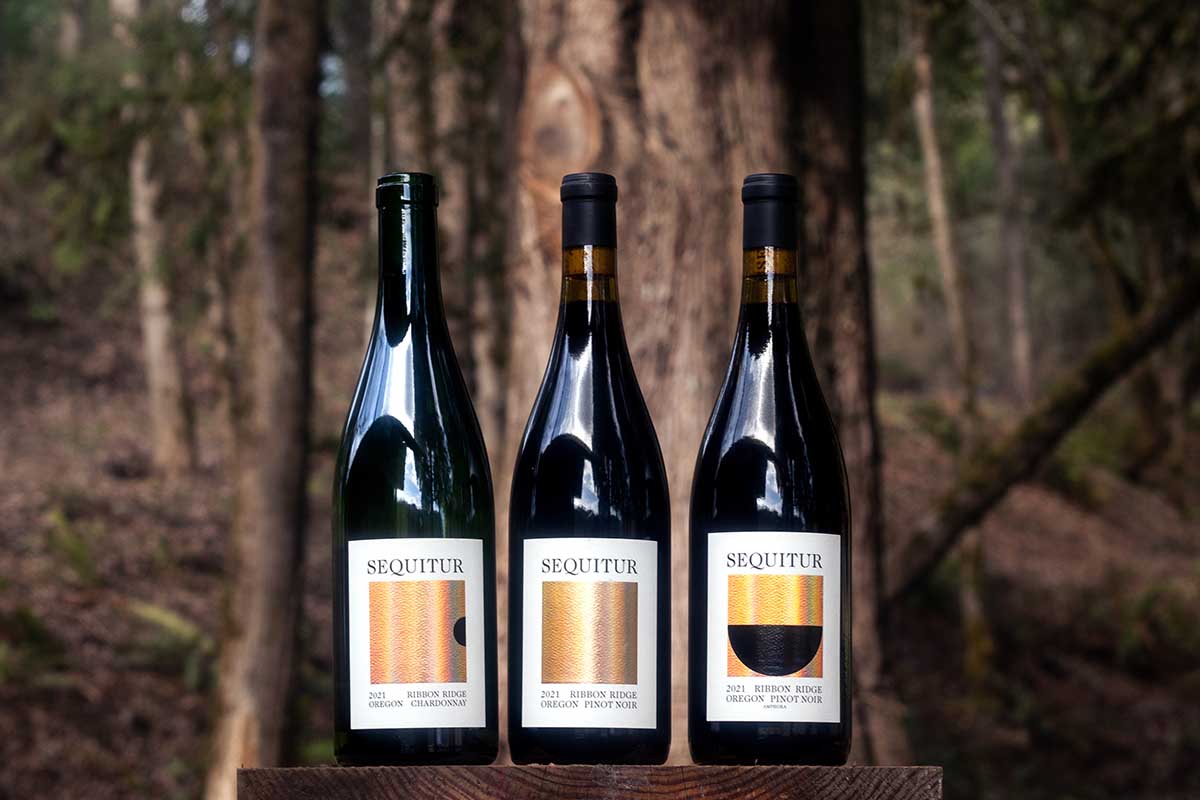
There are more than 700 wineries packed into the Willamette Valley these days, something its earliest vintners couldn’t imagine when the first vines were planted back in 1965. This region shares a latitudinal line with prime French wine territory, which partially explains why grapes flourish throughout the area. In 1979, a famous blind tasting where a group of Oregon pinots beat comparable French labels had wine experts asking where this “Ore-gone” wine came from, and it’s been a steady, measured rise for the region ever since. It used to be that the only wines that ever made it out of the region were pinot noirs, but that has long since changed.
Before natural wine ever became a trend, those pioneering winemakers were also growing and producing in what we now know as organic and biodynamic standards, continuing the proud tradition of Oregon agriculture. It forges along today, increasing as more producers let the fertile soil take care of the hard work.
Whether level three sommelier or chardonnay novice, there are an endless number of reasons why more people are adding a day or two in the Valley in their Pacific Northwest itineraries. The wine is only one connection to the land here: world-class outdoor activities and hyper-local food aside, visitors can often get time with the very people who’ve produced the wine in their glass. As well, there’s been a rise in female and LGBT representation, leading to the country’s first recurring Queer Wine Fest.
Inside the World’s First Queer Wine Festival
“It would be really difficult to not have a bunch of wine people on a queer-owned farm have a bad time.”Getting There
The beauty of the Willamette Valley is that the formal wine region starts less than an hour west or south of Portland. Although the AVA is more than 100 miles in length, the northernmost sub-AVA, Tualatin Hills, begins just outside the end of Portland’s western suburbs and is highly accessible. Even the Valley’s southernmost point is a doable day trip.
That makes driving very feasible, and there are a few shuttle services that facilitate day trips to wineries depending on where you’re headed. The Valley is also a phenomenal biking area, and there are plenty of ways to take your wine tasting on two wheels and enjoy some incredible scenery along the way.
Where to Stay
The Valley is dotted with boutique hotels, inns and B&BS, and the offerings are evolving along with the times. Typically, it makes sense to stay in the anchor towns of Newberg or McMinnville, as that will situate you closest to the largest concentration of wineries. The Atticus Hotel quickly became a destination in and of itself, really elevating standards in Willamette Valley. Guests can enjoy a level of service and amenities here that would routinely cost three times as much in more popular wine regions to the south. Douglas on Third is a less formal, yet still charming way to enjoy McMinnville’s main Third Street area.
Just outside Newberg, The Allison Inn & Spa is a choice getaway for locals, continuing that high level of service. It’s certainly at the top level of prices for Oregonians, but for those coming from out of state, it retains serious value compared to like-minded resorts elsewhere. Further south, the small town of Independence is going through a resurgence, slowly remolding itself into a hub for small businesses and outdoor recreation. Whether you want to mix a wine visit with river kayaking or mountain biking, The Independence Hotel is a fine home base, with sensible, updated accommodations well-positioned to explore Willamette Valley’s less-traveled southern frontier.
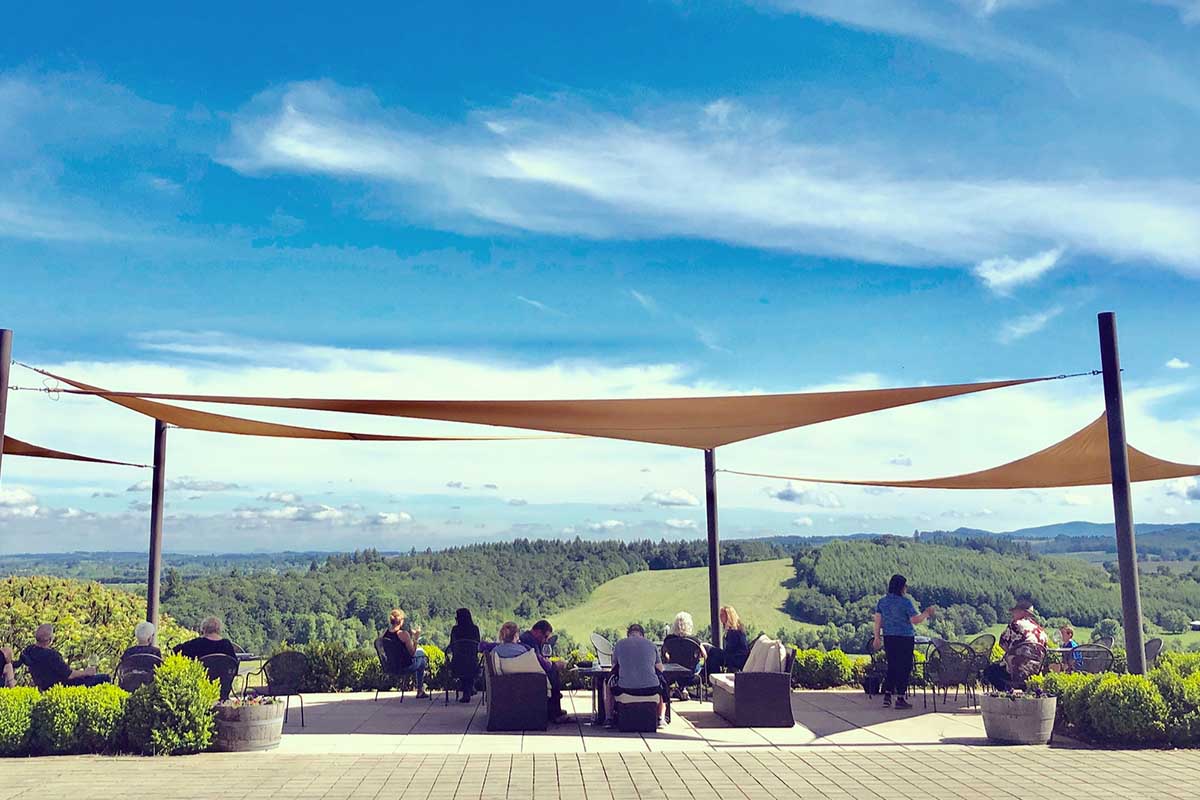
Can’t-Miss Wineries in Willamette Valley
I was really hesitant to include Sequitur in this story. Legendary winemaker Michael G. Etzel’s newest project, which opened last January, is in that perfect stage of having some buzz, but not too much. It’s relatively easy to get a tasting reservation and seating times are flexible. That’s sure to change.
Soter Vineyards follows a more traditional wine-tasting experience, centered at its 240-acre, biodynamic Mineral Springs Ranch less than 15 minutes driving distance from Sequitur. The winery also has an excellent food program, taking advantage of what’s available from its own farm. Lange Estate is a prime example of the rich, family-driven heritage of the region through Don and Wendy Lange’s long-standing commitment to a gorgeous parcel of land tucked into the Dundee Hills.
There are 10 sub-AVAs within the larger designation, with the Mt. Pisgah AVA being the newest (formalized in June 2022). There are only three wineries here, but Illahe’s (pronounced Ill-hee) new tasting room — full of gorgeous wood and wide windows opening up to an expansive view — is worth the visit. With most of the aging happening above ground, wine caves are few and far between. Illahe does have a small one, but Archery Summit’s is much larger and built for tasting and visitors. Walking through the mini-labyrinth offers a cool respite, even on the warmest August days, and is certainly a unique setting for a tasting.
Lastly, the McMinnville AVA is the furthest west of the subregions, less than an hour from the Oregon Coast. There are potentially few better examples of the robustness of organic viticulture than at Coeur de Terre Vineyard, where the Neal family has largely been letting the land do the heavy lifting for the last 25 years with phenomenal results.
Beyond Wine
While wine is the main course, the gluttony of activities on offer throughout the Willamette Valley is impressive. During the peak visitor months of May to September, regional produce is at a high (berry season is something to absolutely plan for). Food tourism is as much an extension of Portland’s own scene as it is something completely separate, and you’ll be hard-pressed to find a bad meal between winery visits. Downtown McMinnville has become something of its own restaurant destination with myriad seasonally-driven options that would hold their weight in much more competitive dining markets.
What this writer loves most about the Willamette Valley is the sheer variety of outdoor activities on offer. The Willamette River cuts a line through the eastern side of the AVA and is a fine kayaking or rafting route. Hiking, road cycling, mountain biking, gravel, you name it — the forests in the coastal foothills and the open roads throughout the Valley all lead to plenty of ways to round out a visit to this exceptional wine-growing region.
Every Thursday, our resident experts see to it that you’re up to date on the latest from the world of drinks. Trend reports, bottle reviews, cocktail recipes and more. Sign up for THE SPILL now.
